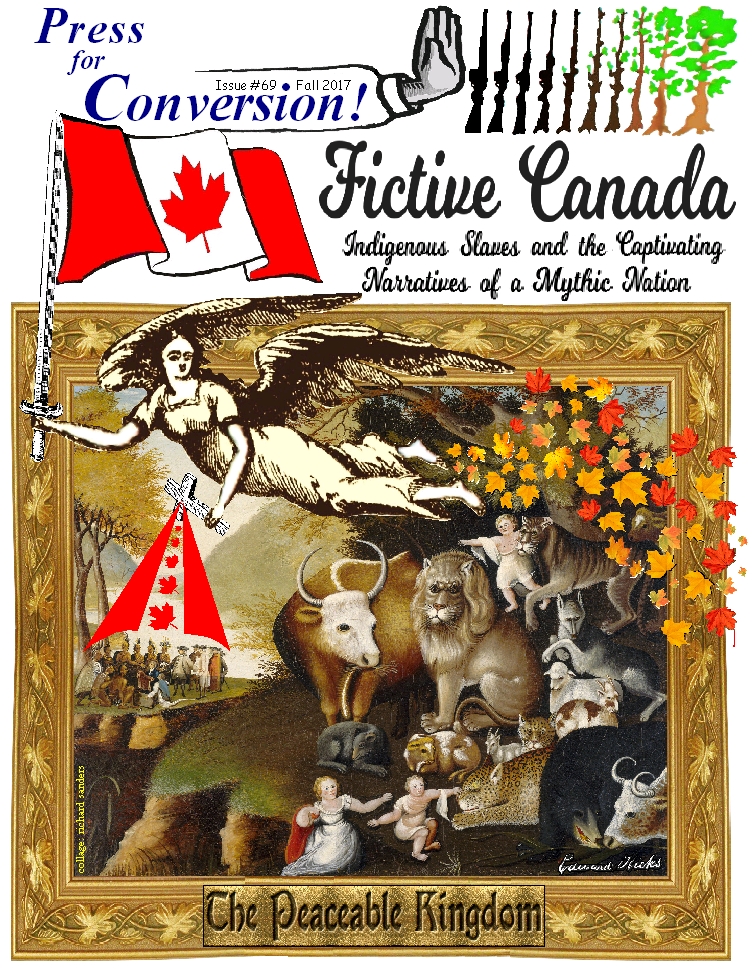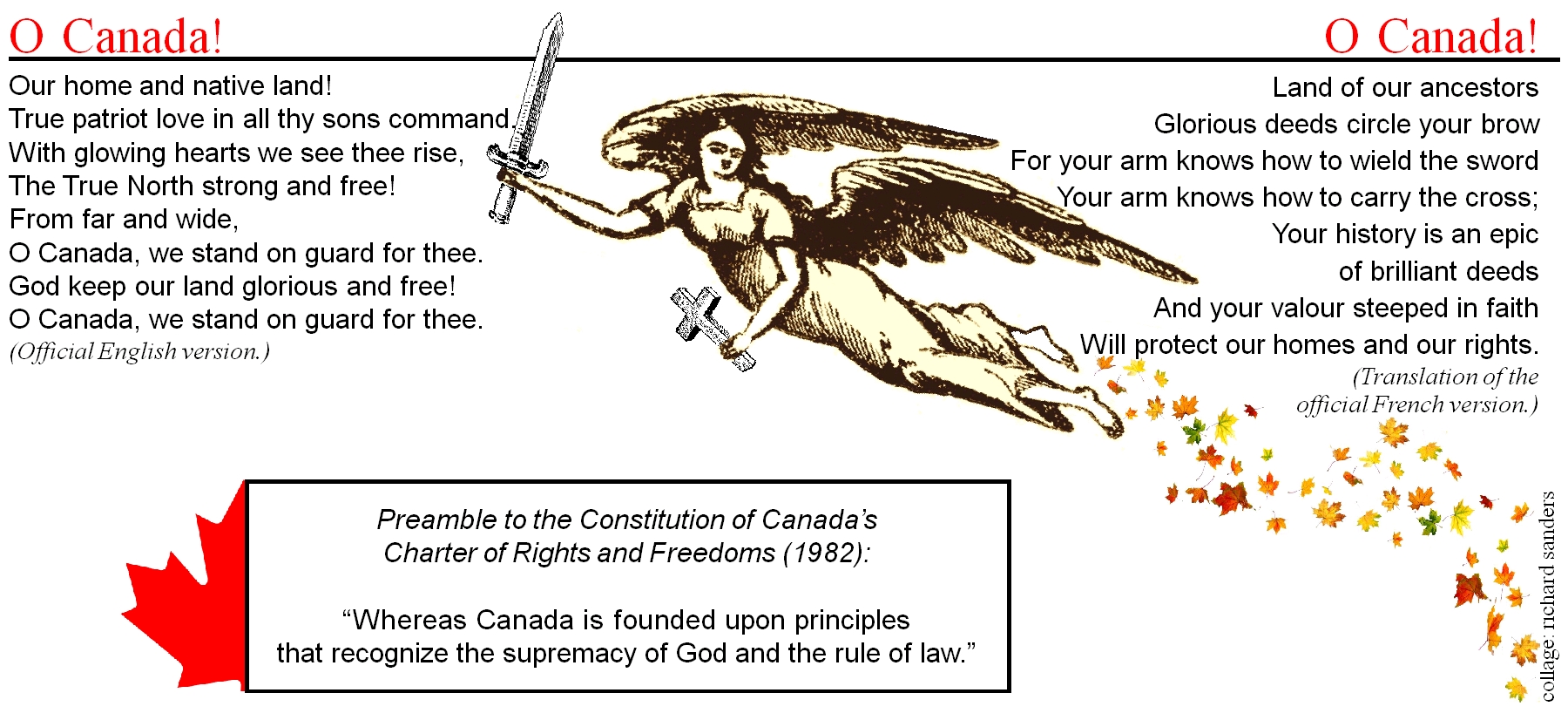
Issue #69,
Press for Conversion! (Fall 2017)
A 52-page, full-colour issue of COAT's
publication
Coalition
to
Oppose
the
Arms
Trade
Please subscribe, buy a copy or make a donation to COAT
(click here for a coupon),
or use the paypal link on our webpage.
To subscribe within Canada: 3 issues ($25), 6 issues ($45).
Buy one copy for $8;
or get 5 for $30; 10 for $45; 20 for $45; 50 for $80.
|
|
The front cover of Fictive
Canada is a collage highlighting an Edward Hick's primitive
surrealist painting called "The
Peaceable Kingdom" (circa 1834).
Click here to see the original
painting. Overlaying this artwork is an
angelic figure carrying a flag-adorned sword and a cross, as described in the official
French version of "O Canada" (see below). This fictive "Angel Canada"
is imagined here as she generously dispenses vainglorious Canadian values from both
ends of her being. Her crucifix graciously bestows
flag-like rays of Canadiana which rain down on a meeting of beneficent
gift-bearing European settlers with semi-clad Indigenous people.
Meanwhile, Canada's ever-symbolic
national leaves (with their magically taming and civilising effect) can be seen gloriously streaming out from behind the
mythical angel as she conducts a strategic sortie over a group of wild and savage beasts that are
peacefully mingling with their docile prey.
Here is an excerpt from
Richard Sanders, "True Crime Stories and the Politics of
Literary Escapism: Canada as a Fiction in the
Imperial Genre," Fictive Canada, Issue #69, Press for
Conversion! Fall 2017, p.2:
According to Canada’s most
illustrious literary son, Northrop Frye, the whole "mood" of our nation is
expressed in the "haunting vision of serenity" of a primitive surrealist
painting by Edward Hicks called "The Peaceable Kingdom," circa 1834. (See
a modified version on the front cover.) In the foreground we see normally
vicious predators sitting cheek to cheek, and ever so passively, with
blank-faced and cherubic white pioneer children. With them are tender
lambs and other tasty morsels of easy prey who, as Frye said, "stare past
us with ... serenity."1 It is a utopian vision of the Biblical prophet
Isaiah, writ large on the North American landscape. In the background,
kindly European settlers are seen parlaying peace with the Indians,
generously offering them blankets and other trinkets symbolising their
good will.
Frye, whose genius as a literary critic and theorist
made him one of the 20th century’s most influential thinkers, saw in this
dream-like canvas the "quest for the peaceable kingdom"2 that was, he
argued, the defining feature of Canada’s entire literary tradition. But
what Frye left unsaid is that the fabled peaceableness so fancied by
Canadian wordsmiths is utter hypocrisy, a hallucinatory national farce.
Just as predators and prey never live side by side in serene nonviolent
oneness, neither do conquering imperial powers treat subjugated nations
with justice and peace. The fictive serenity of Hick’s art reflects, in
Pollyannaish glory, the flatulent rhetoric by which so much of Canada’s
deluded literary tradition, both fiction and nonfiction, has absurdly
marched.
The graphic and text below is from Fictive Canada,
p.41.

|

